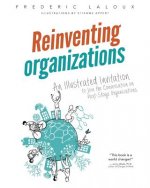
Code: 02414837
Introduction of IAS / IFRS by the BMW AG in 2000
by Johannes-Cornelius Adari, Henrik Thrane, Pascale Taube
Bachelor Thesis from the year 2004 in the subject Business economics - Supply, Production, Logistics, grade: 1,6, Hogeschool Zeeland (Economics), language: English, abstract: Inhaltsangabe:Abstract:§This case study deals with an i ... more
- Language:
 English
English - Binding: Paperback
- Number of pages: 74
Publisher: Diplom.de, 2004
- More about this

94.01 €
RRP: 95.96 €
You save 1.95 €

In stock at our supplier
Shipping in 15 - 20 days
You might also like
-

Hydrodynamics
44.10 € -

Leitfaden fur Existenzgrunder
95.74 €
Give this book as a present today
- Order book and choose Gift Order.
- We will send you book gift voucher at once. You can give it out to anyone.
- Book will be send to donee, nothing more to care about.
More about Introduction of IAS / IFRS by the BMW AG in 2000
You get 234 loyalty points
 Book synopsis
Book synopsis
Bachelor Thesis from the year 2004 in the subject Business economics - Supply, Production, Logistics, grade: 1,6, Hogeschool Zeeland (Economics), language: English, abstract: Inhaltsangabe:Abstract:§This case study deals with an important financial aspect of multinational companies, i.e. their obligation of accounting. Until the year 2000, BMW used to prepare its annual external audits under German Commercial Code Standards (HGB). This tradition ended in 2000, when BMW accounted under International Accounting Standards (IAS) for the first time.§7 years before, Mercedes-Benz was the first German automotive manufacturer adopting international Standards in 1993. But in Mercedes case US-Generally Accepted Accounting Principles (US-GAAP) were chosen, because the objective was to become listed at the New York Stock Exchange (NYSE). At this time US-GAAP were not accepted outside the North American Free Trade Association (NAFTA), esp. not by the EU Commission, but the US-Principles were applied in the largest and most important stock market worldwide. On the other hand, US organizations like the Securities and Exchange Commission (SEC) did not accept any other accounting standards in these days. Accordingly, Mercedes-Benz had to prepare two annual audits: one under US-GAAP and the other under HGB. §This treatment, obviously, was highly inefficient, providing lots of encumbrances to US-capital-seeking European companies: accounting and auditing took too much time, personnel resources and money. Another negative effect was that many US companies hesitated with urgently required investments in Europe. But nevertheless, multinational groups seemed to have several advantages by using international accounting standards, even if they had to prepare more than one audit annually.§Within the 1st part, this case study provides basic information dealing with accounting standards, in particular reasons and objectives, organizational patterns and the process of IAS becoming international accepted by pointing out their most important differences compared to US-GAAP and German HGB Standards. §The 2nd part deals with the reasons of changing BMW s accounting standards by looking at the Group s key markets and the impact of IAS-adoption by examining their figures of non current assets, inventories, other current assets, liabilities & deferred incomes, provisions, equity as well as research & development within a four years comparison. §At last the 3rd part gives an examination and summary of the results of IAS-reception for BMW, the effects on the stock market, changes of rating on the global market and gives hints to future accounting trends in the Automotive sector. §Zusammenfassung:§Die vorliegende englischsprachige Projektarbeit behandelt das Thema internationale Rechnungslegung (international accounting) in der Automobilindustrie am Beispiel der BMW AG, die erstmals im Jahr 2000 die Rechnungslegung nach HGB auf International Accounting Standards (IAS) / International Financial Reporting Standards (IFRS) umstellte. §Ziel der Arbeit ist es, die Gründe, Ziele und die bilanziellen Auswirkungen des Systemwechsels von der nationalen hin zur internationalen Rechnungslegung §am Beispiel von BMW herauszuarbeiten und zu bewerten. §Dazu wurde die Arbeit in 3 Teile untergliedert. Im Vorwort und im 1. Teil werden die allgemeinen Grundlagen der internationalen Rechnungslegung erläutert. Neben der IAS-/ IFRS-Begriffsdefinition, den Zielen und Erwartungen der IAS-/IFRS-Anwender im globalen Wettbewerb wird die Konkurrenz zu den US GAAP-Regeln anhand der historisch bedingten Unterschiede beider Wirtschaftssysteme untersucht, unter besonderer Berücksichtung der Rolle der amerikanischen Börsenaufsicht (US SEC). Dabei wird die Frage der Notwendigkeit eines europäischen Rechnungslegungssystems neben den nationalen Regelwerken beantwortet. §Ansc...
 Book details
Book details
Book category Books in English Economics, finance, business & management Business & management
94.01 €
- Full title: Introduction of IAS / IFRS by the BMW AG in 2000
- Subtitle: Needs, effects and consequences for the group
- Author: Johannes-Cornelius Adari, Henrik Thrane, Pascale Taube
- Language:
 English
English - Binding: Paperback
- Number of pages: 74
- EAN: 9783838681924
- ISBN: 3838681924
- ID: 02414837
- Publisher: Diplom.de
- Weight: 109 g
- Dimensions: 210 × 148 × 5 mm
- Date of publishing: 10. August 2004
Trending among others
-

The Personal MBA 10th Anniversary Edition
31.40 € -

Personal MBA
14.32 € -10 % -

Transformed: Moving to the Product Operating Model
34.25 € -2 % -

The Millionaire Real Estate Investor
19.71 € -27 % -

Thinkertoys
19.30 € -17 % -

LOVED: How to Rethink Marketing for Tech Products
25.30 € -27 % -

Smart Couples Finish Rich
16.05 € -24 % -

Hey Whipple, Squeeze This
25.81 € -17 % -

EMPOWERED - Ordinary People, Extraordinary Products
23.47 € -29 % -

Smart Women Finish Rich
17.78 € -12 % -

Business Adventures
13.20 € -23 % -

Spiritual Intelligence at Work
14.22 € -21 % -

Reinventing Organizations
26.93 € -

New Leader's 100-Day Action Plan - Take Charge , Build Your Team, and Deliver Better Results Faster 5e
24.49 € -26 % -

Business Book
20.32 € -24 % -

Coffee Bean - A Simple Lesson to Create Positive Change
13.71 € -29 % -

Official Guide to the TOEFL iBT Test, Sixth Edition
34.65 € -18 % -

The Hard Thing about Hard Things
23.37 € -23 % -

Eat That Frog!
14.12 € -30 % -

Slight Edge
16.66 € -21 % -

Thinking In Bets
17.68 € -17 % -

The Fearless Organization
26.32 € -20 % -

Good To Great
22.35 € -24 % -

Motive - Why So Many Leaders Abdicate Their Most Important Responsibilities
19.40 € -25 % -

Karmic Management
15.03 € -22 % -

Testing Business Ideas - A Field Guide for Rapid Experimentation
29.98 € -16 % -

Cryptoassets: The Innovative Investor's Guide to Bitcoin and Beyond
34.35 € -

Design Thinking for Business Growth: How to Design and Scale Business Models and Business Ecosystems
26.52 € -26 % -

Competition Demystified
16.86 € -20 % -

Die 36 Strategeme der Krise - Erfolg haben, wenn andere scheitern
20.01 € -

Crucial Conversations: Tools for Talking When Stakes are High, Third Edition
24.79 € -29 % -

Toyota Way, Second Edition: 14 Management Principles from the World's Greatest Manufacturer
28.35 € -23 % -

Millionaire Real Estate Agent
20.42 € -28 % -

The Advantage
24.39 € -19 % -

Management
23.78 € -22 % -

Marketing 5.0 - Technology for Humanity
22.76 € -22 % -

The Goal
28.04 € -1 % -

Business Model Generation - A Handbook for Visionaries Game Changers and Challengers
30.18 € -20 % -

Playing with FIRE (Financial Independence Retire Early)
18.18 € -5 % -

Ready, Fire, Aim - Zero to GBP100 Million in No Time Flat
29.77 € -28 % -

Fundamentals of Corporate Finance
77.04 € -4 % -

Ride of a Lifetime
15.24 € -29 % -

The Big Book of Dashboards
38.31 € -27 % -

Confessions of a Recovering Engineer - Transportation for a Strong Town
19.91 € -26 % -

Wealth Of Nations
29.77 € -

Leading with AI and Analytics: Build Your Data Science IQ to Drive Business Value
23.37 € -28 % -

The Machine That Changed the World
16.76 € -17 % -

High-Performance Training for Sports
45.53 € -15 % -

What's Your Problem?
28.55 € -21 %
Collection points Bratislava a 2642 dalších
Copyright ©2008-24 najlacnejsie-knihy.sk All rights reservedPrivacyCookies


 15549 collection points
15549 collection points Delivery 2.99 €
Delivery 2.99 € 02/210 210 99 (8-15.30h)
02/210 210 99 (8-15.30h)